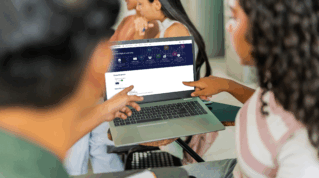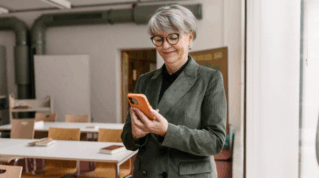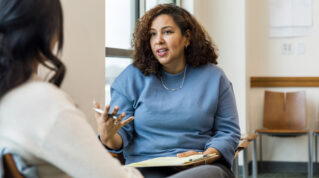The increase in mental health concerns among pupils across the schools in our trust and nationally is stark. In March 2021, the number of children assessed by councils as having a mental health need had risen sharply to 77,390 from 61,830 just two years earlier. This equates to 1,500 children a week being referred for support.
Demand is sprinting ahead of supply at an alarming rate. A stem4 survey of 1,000 GPs has found that half of referrals for under-18s with anxiety, depression and self-harm were rejected by CAMHS because their symptoms were not considered to be serious enough.
In the south west where we are based, CAMHS referrals took around three months ten years ago. These were typically about specific concerns relating to issues like eating disorders, mental wellbeing, and anxiety.
Two to three years ago, with CAMHS starting to be stretched, referral time for early intervention had increased and the threshold had risen to children with serious, diagnosed conditions.
Today, the waiting time is on average over 22 weeks and only young people at risk of suicide are can really hope to be prioritised and seen faster. This has become the unwritten threshold.
We know our children need support, but the systems that are meant to be providing it just aren’t available. This is why trusts like ours focus so heavily on what else they can do, and why we make disadvantage a strategic priority. We do this with the aim of easing the acute pressures that many of our families face so that our children are well and able to focus on learning.
Over the past year, we have seen students starting to share worries about money and their family’s financial position. To give them the knowledge and tools to start to unpick some of these worries, financial education is built into our broader citizenship curriculum.
In our primary academies, we have linked with community partners to introduce some ‘money basics’ to support us when answering their questions. Pupils have told us this helps them feel more in control – which we know is good for their wellbeing.
Our schools are increasingly washing and tumble-drying uniform
We’ve also seen a big uptake in our breakfast clubs (double, in some schools) and free after-school provision. Our schools are also increasingly washing and tumble-drying uniform, supporting with access to housing and providing two free warm meals a day.
For families who need it, we provide a warm place for them to come during the school day – often after school drop-off, so that parents and younger siblings are warm and fed while their children are at school. We are using our community links to support with adult learning, with the added benefit of a hot meal and staying warm without the cost of heating at home.
Our academies are adjusting to the change in the scale of the challenges experienced by our families. Some are combining community events with warmth and food, such as curry and quiz nights. These are free to all, but we extend personal invitations to the families we know to be vulnerable to ensure the threshold for attendance is low. This is new, but we are already projecting that such events could become a standard feature of the school calendar.
We also offer pastoral support for families at crisis point to access financial expertise. These are little things, like providing a safe and warm space for a parent to make a difficult phone call about debt or connecting families with experts who can help them to manage their finances.
We do all of this and more because there is often no one else to do it, and it is essential to ensuring children arrive at school ready to learn and benefit from the equity that education provides.
But there is hope on the horizon too.
Before the pandemic, early intervention had become increasingly challenging to access. Now, NHS mental health support teams are being rolled out in schools and we are already benefitting from early intervention in a way that just wasn’t possible until recently. Fourteen of our twenty-two academies are now working with these teams, and on average six pupils per school are accessing cognitive behavioural therapy who would not have had access to this resource otherwise.
It’s nowhere near enough, but it is a start.















Your thoughts